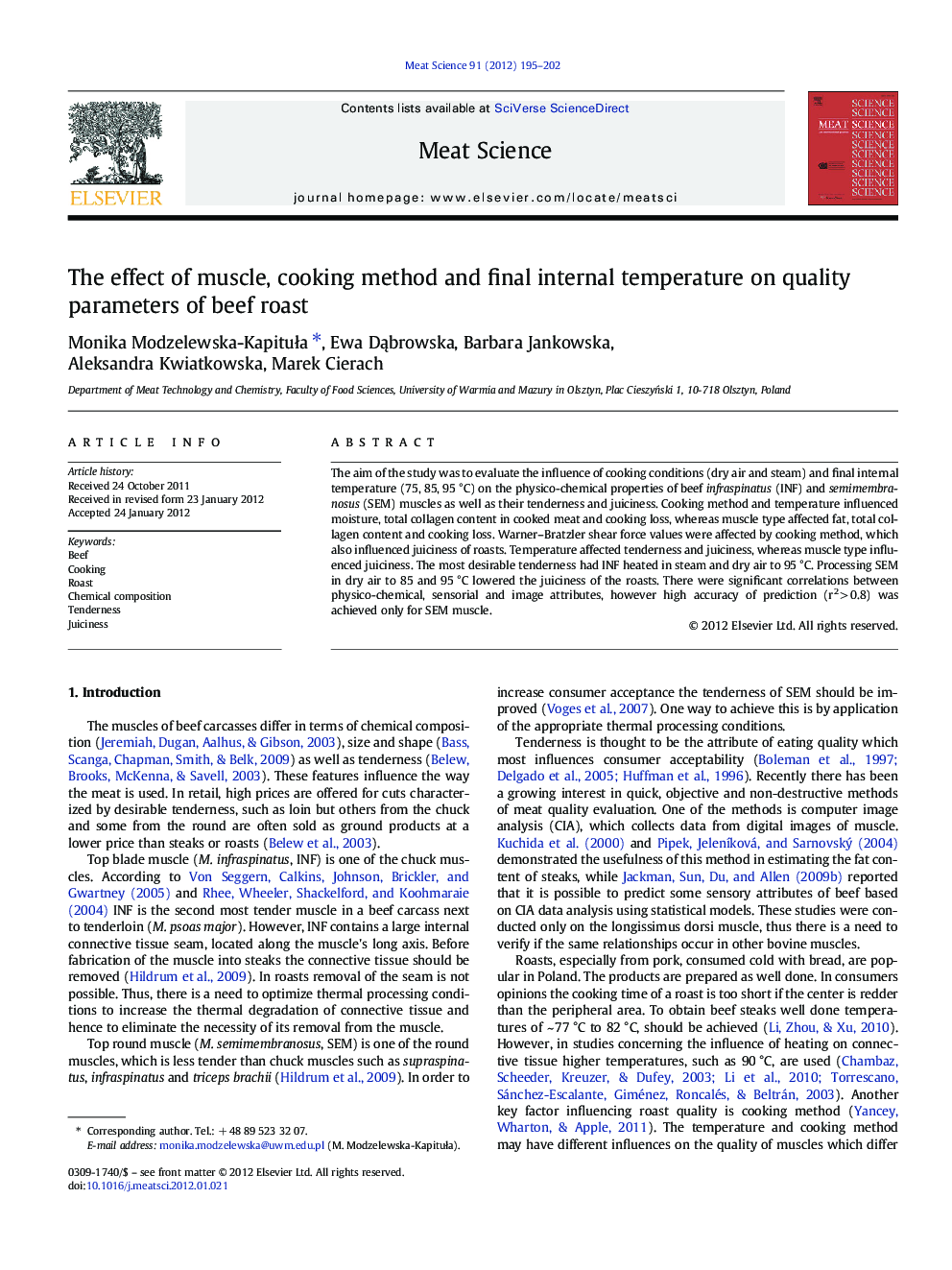| Article ID | Journal | Published Year | Pages | File Type |
|---|---|---|---|---|
| 2450183 | Meat Science | 2012 | 8 Pages |
The aim of the study was to evaluate the influence of cooking conditions (dry air and steam) and final internal temperature (75, 85, 95 °C) on the physico-chemical properties of beef infraspinatus (INF) and semimembranosus (SEM) muscles as well as their tenderness and juiciness. Cooking method and temperature influenced moisture, total collagen content in cooked meat and cooking loss, whereas muscle type affected fat, total collagen content and cooking loss. Warner–Bratzler shear force values were affected by cooking method, which also influenced juiciness of roasts. Temperature affected tenderness and juiciness, whereas muscle type influenced juiciness. The most desirable tenderness had INF heated in steam and dry air to 95 °C. Processing SEM in dry air to 85 and 95 °C lowered the juiciness of the roasts. There were significant correlations between physico-chemical, sensorial and image attributes, however high accuracy of prediction (r2 > 0.8) was achieved only for SEM muscle.
